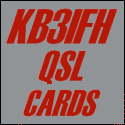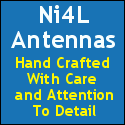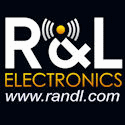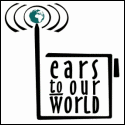Posts Tagged ‘repeater’
 Rehab for the KØNR Repeater
Rehab for the KØNR Repeater
My UHF repeater has been operating on 447.725 MHz here in Monument for a couple of decades now. It started out as a classic “pet repeater” project and has been operating from my basement all this time. Over time it has picked up additional users and has turned into the de facto hangout for our local radio club.
The repeater system has gone through a number of revisions over the years, especially for the RF transmitter and receiver. I wanted to retire the pair of Motorola Mitrek mobile radios I have been using when they started to exhibit a few lose connections. Really though, I thought it was time for some synthesized, modern RF gear in a compact package.
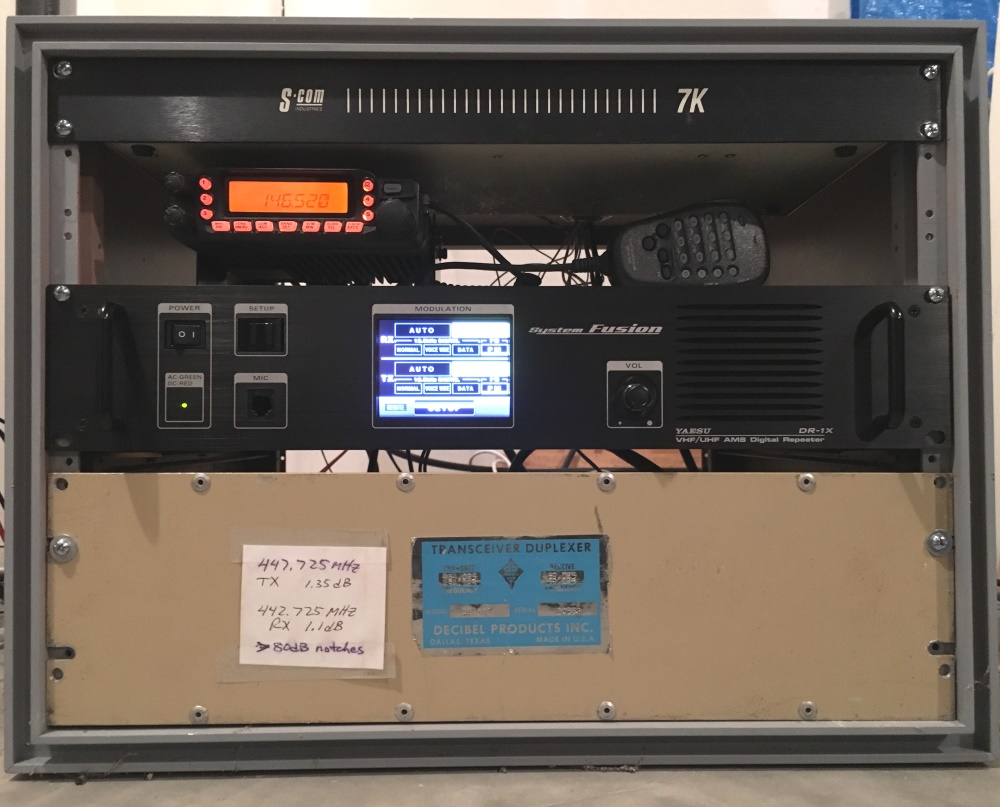 When Yaesu offered an attractive price on their DR-1X Fusion repeater, I jumped at the chance. Initially, I put it on the air in mixed analog-digital mode with the repeater automatically switching modes to handle either analog FM or C4FM digital. I used the internal controller of the DR-1X which is quite simple and has limited functionality. The DR-1X supports using an external controller but implementing the mixed analog-digital mode is…well…challenging. (Various people have figured out ways to do it with modifications to the DR-1X or using additional hardware.) In the end, I decided to just run the repeater in analog FM mode and have the expanded features of a real controller.
When Yaesu offered an attractive price on their DR-1X Fusion repeater, I jumped at the chance. Initially, I put it on the air in mixed analog-digital mode with the repeater automatically switching modes to handle either analog FM or C4FM digital. I used the internal controller of the DR-1X which is quite simple and has limited functionality. The DR-1X supports using an external controller but implementing the mixed analog-digital mode is…well…challenging. (Various people have figured out ways to do it with modifications to the DR-1X or using additional hardware.) In the end, I decided to just run the repeater in analog FM mode and have the expanded features of a real controller.
The repeater controller is an SCOM 7K that has been in service for decades. SCOM has long since moved on to a newer, improved model but my 7K keeps on ticking. The 7K has the voice synthesis and autopatch options installed, so, yes the repeater has an autopatch (not that anyone cares). A Yaesu FT-7800R is used as a 2m remote base and the duplexer is a classic Decibel Products. Not shown in the photo is a Bearcat WX100 weather receiver that is used to transmit weather information when an alert occurs in our area.
I’ve documented the wiring diagram and configuration used here: k0nr-repeater-construction-notes
This was a good opportunity to clean up some of the cabling and physical mounting that had degraded over time. (A kluge here, a kluge there and entropy takes over.) I am happy with the result.
73, Bob K0NR
The post Rehab for the KØNR Repeater appeared first on The KØNR Radio Site.
 Digital Voice Balkanization
Digital Voice Balkanization
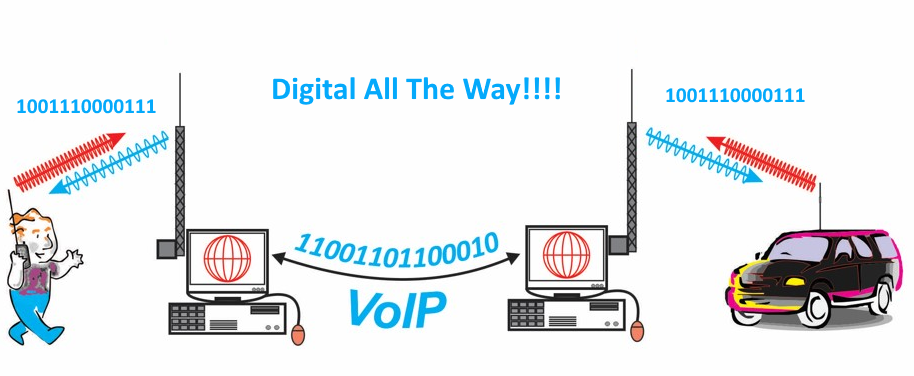 Wouldn’t it be cool if we had one digital communications format for the VHF/UHF amateur bands with all equipment manufacturers offering compatible products? The basic modulation and transport protocol would be standard with manufacturers and experimenters able to innovate on top of that basic capability. There would be plenty of room to compete based on special features but all radios would interoperate at a basic level. You know, kind of like analog FM.
Wouldn’t it be cool if we had one digital communications format for the VHF/UHF amateur bands with all equipment manufacturers offering compatible products? The basic modulation and transport protocol would be standard with manufacturers and experimenters able to innovate on top of that basic capability. There would be plenty of room to compete based on special features but all radios would interoperate at a basic level. You know, kind of like analog FM.
Yeah, we don’t have that. 
73, Bob K0NR
Graphic: Adapted from HamRadioSchool.com
The post Digital Voice Balkanization appeared first on The KØNR Radio Site.
 Hey, My Yaesu Beeps When I Transmit!
Hey, My Yaesu Beeps When I Transmit!
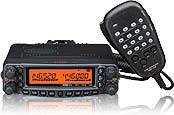 I own a variety of Yaesu ham radio transceivers and like them a lot. Except for that one little annoying feature that the FM rigs have: WIRES.
I own a variety of Yaesu ham radio transceivers and like them a lot. Except for that one little annoying feature that the FM rigs have: WIRES.
About once every two weeks, one of the local radio hams gets on the repeater with a DTMF beep at the start of every transmission. We’ve come to expect it now, so the first question to the ham is “are you by chance using a Yaesu radio?” They always say “yes” and then we talk them through the process of turning off the WIRES “feature.”
The WIRES function sends a DTMF signal at the start of every transmission for use with Yaesu’s version of internet repeater linking (which is not used much in the US). The problem is that it is very easy to bump the wrong button on your radio and accidently get it into this mode. This means that this is mostly a nuisance feature in the US.
I recently came across a way to disable this feature on your Yaesu radio so that it won’t sent the DTMF tone even if you activate it by accident. Basically, you set the WIRES tone to be empty, so nothing is transmitted if you accidentally turn on WIRES. I did not come up with this clever hack…in fact, I am not sure who put this together. (If you do, let me know and I’ll give them credit.) Take a look at this pdf file and follow the instructions to de-WIRES your radio: Turn Off Wires
73, Bob K0NR
 This Spewed Out of the Internet #25
This Spewed Out of the Internet #25
 Here’s another update of
Here’s another update of interesting important stuff spewing forth from the internet.
I put my two presentations from HamCon Colorado out on the web: Practical Amateur Radio Measurements and Mountaintop VHF in the Colorado High Country . Also, check out Kelly N0VD’s blog posting on the event.
Having trouble finding a repeater to use on VHF? Check out my Shack Talk article on HamRadioSchool.com
KB5WIA provides some good tips on EME operating.
Hans PD0AC addresses the question: What’s the Best Chinese Dual-band HT? For best price/performance, he selected Baofeng UV-B5/UV-B6 (and I agree).
The Noise Blankers continue to publish their Ham Hijinks. Remember: Do Not Take These Guys Seriously. Seriously. Do not do this. Seriously.
There’s lots of great ham radio events coming up this summer. This weekend is the CQ Worldwide VHF Contest, the only “true VHF contest” out there since only the 50 MHz and 144 MHz bands are used. Then there’s the Colorado 14er Event, which includes Summits On The Air (SOTA) activations, on August 4th. (Don’t forget to check out the great new Colorado 14er Shirts!) The Colorado QSO Party is another great operating event, on August 31st.
Remember: There is no such thing as ground.
Think about it: an infinitely large electrical node with zero impedance able to sink an infinite current. Not likely.
73, Bob K0NR
 FCC Grants Waiver on TDMA
FCC Grants Waiver on TDMA
 From the That Took A Long Time department, the FCC granted a waiver requested by the ARRL that clarifies the rules concerning the use of TDMA (i.e., MOTOTRBO or DMR) on the ham bands. I posted on this topic way back in March 2011, so refer to that article for the background. Update: ARRL article posted here.
From the That Took A Long Time department, the FCC granted a waiver requested by the ARRL that clarifies the rules concerning the use of TDMA (i.e., MOTOTRBO or DMR) on the ham bands. I posted on this topic way back in March 2011, so refer to that article for the background. Update: ARRL article posted here.
I was surprised to find that the FCC quoted my comments that I filed on this proceeding:
Some commenters state the proposed rule change “removes an ambiguity in Part 97 concerning the use of single slot TDMA technology” and it “enable[s] and encourage[s] the adoption of spectrally efficient narrowband technology.” Comments of Robert Witte at 1.
OK, fine, it was buried in the footnotes but I appreciate the mention. I can now die in peace knowing that my name is in the FCC record and not associated with a rules violation ![]()
Thanks to Jeff K0RM, for pointing this out.
73, Bob K0NR
 Proper Kerchunking
Proper Kerchunking
 Seventy Three
Seventy Three
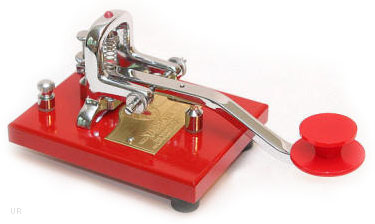 Like many technical activities, amateur radio has its own set of jargon and protocols used both on and off the airwaves. As part of our Technician license course, we cover basic jargon but also encourage the use of plain language. A new Technician recently asked about the use of the term “73″ on the local FM repeater, so I am posting this short piece.
Like many technical activities, amateur radio has its own set of jargon and protocols used both on and off the airwaves. As part of our Technician license course, we cover basic jargon but also encourage the use of plain language. A new Technician recently asked about the use of the term “73″ on the local FM repeater, so I am posting this short piece.
Much of amateur radio history and practice is rooted in Morse Code, which traces back to the electrical telegraph. Two shorthand codes you’ll hear on both voice and Morse Code communications are:
73 means Best Regards
88 means Love and Kisses (sometimes Hugs and Kisses)
These codes originated with telegraph operating and are listed in the Western Union 92 Code, a set of numerical shorthand codes. On voice (phone) transmissions, you often hear something like this:
“Great to talk to you, Joe. Thanks and Seventy Three. This is K0NR, clear.”
Since 73 is often used at the end of a radio contact, it almost takes on the meaning of “best regards and goodbye.” “Eighty Eight” is used in a similar manner but is heard much less frequently on the ham bands.
Sometimes you’ll hear 73 expressed as “Seven Three”, which corresponds to how the Morse characters were sent. It is incorrect to say “Seventy-Three’s” since this would literally mean “Best Regards’s”. Of course, most of us have made this error from time to time, very similar to grammatical errors in the English language. (“Somes time we forget to talk good.”)
QRP operators often use 72 instead of 73 because low power operating is all about getting by with less. See W2LJ’s blog.
And I normally use 73 at the end of most ham radio related email messages.
73, Bob K0NR


